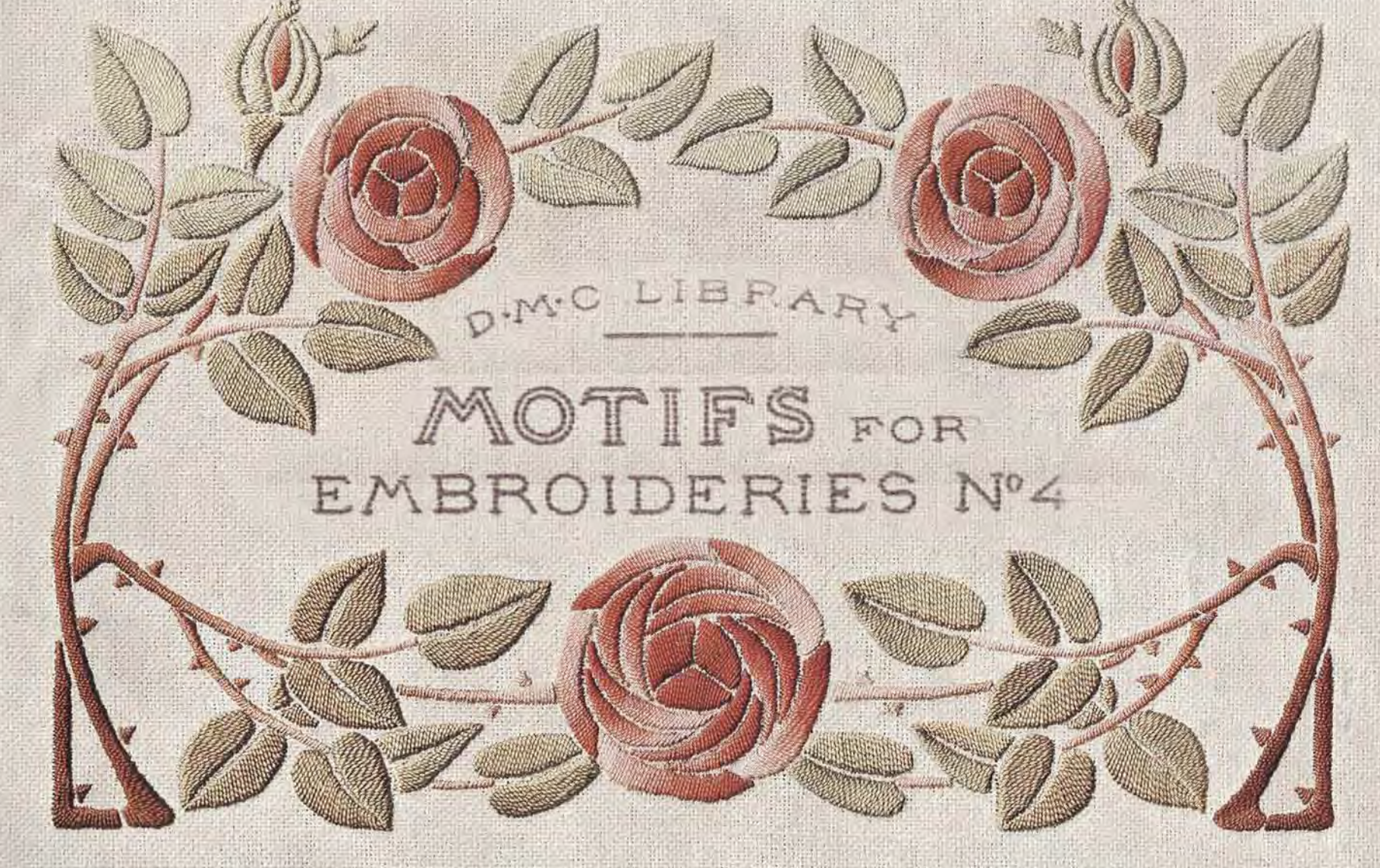The 10 foot Fichu
I make samples of all my products before I put them up for sale, because I want you to see real examples, not just a rendered drawing of what it might look like. For something like a border, I simply stitch out enough repeats to give a good impression of how it would look on a gown. For small items like a pocket, I can make up a completely finished sample for photos. Afterwards, swatches go in a box and finished samples go up for sale, and I generally don’t keep any embroidery for myself.
However, I wouldn’t be doing this if I didn’t want to wear beautifully embroidered items just as much as you do! As Costume College approached, I was daydreaming more and more about having a full set of frilly muslin accessories to wear, especially since I wasn’t making a new gown. An extra bonus was that no matter how my shape changed in the future, a matching fichu, apron, and engageantes would always fit.
I’ve been really intrigued by examples of Dresden embroidery, and have some ideas about how I can translate it into machine embroidery. That will take a fair amount of experimentation, and I just didn’t have time before Costume College to begin, let alone finish, a project like that.
I needed something I could digitize and stitch out relatively quickly, but that I also loved enough to keep for myself. I settled on this fichu at the Met because not only is it sweet and delicate, it’s lusciously long and can be tied in back. The design is two simple flowers and some vines, set alongside a scalloped edge.
As for just how long, I grabbed my trusty sidekick Chris and we did some quick math with a measuring tape, trying to guesstimate how much length would be needed. The Met doesn’t provide any dimensions or other photos of this piece, so there I had to guess about size and shape. It looked like I needed about 120″ in length, and I wanted it to taper near the ends, so I didn’t have a big wad of fabric bunched up in back when I tied it.
We quickly sketched it out in wash away pen on some sheer fabric I had already stabilized and ironed. 120″ in length, about 24″ deep at the widest point, straight for about 12″ each side of center, tapering down to nothing at the ends, and some rough curves sketched in to make all the lines meet up. Sounds good! Let’s go!
Well, obviously that process probably could have been done a little more slowly and carefully, but overall, it worked out. I was so excited to get started that I forgot a step in my usual process – not only stitch out a test swatch, but wash and dry it first to make sure the cutwork edge works. Oops! It ended up a little looser than I like, but that’s fine for this sample, and I can tweak it a little in the final pattern.
Most of the fichu was embroidered with a repeat of two scallops that enclose one of each type of flower, and two repeats fit in my longest hoop. As I rounded the curves, I used the join between the deep scallops as a pivot point, and made sure the deepest point of the furthest scallop touched the line I had drawn. It was such a gradual curve that the short repeat was easily able to handle it. There is a tiny bit of overlap of the leaves and vines as I turned, but since this isn’t a heavy design, it didn’t cause stitching issues and isn’t noticeable once you’re wearing it.
Since I was tapering to a point, I needed a scalloped piece to finish off the ends. That also involved some quick tracing and math to figure out the dimensions of the corner that was shaping up. It was a small enough area that I didn’t worry about flowers, and left it as a plain scalloped section.
When working white on white like this, with your top and bobbin threads the same, it’s really difficult to tell the front from the back. This is awesome, because it means I could reverse the embroidery when I switched sides. When folded and worn, the right side will show at both the top and bottom edges, which also looks to be the case on my inspiration fichu.
I remembered doing something similar on a linen fichu from another Costume College class a couple years back, Making Friends With Your Thimble. We learned a variety of 18th century hand sewing techniques, including this neat little trick.
I applied the same concept to the embroidery on this fichu, flipping it over and embroidering from the back on the second side. Here is a close up of the finished fichu draped on my clothes line. You can see how sheer the fabric is! It’s a nice quality silk cotton blend from the LA fashion district, and I pick up a few more yards every year. The thread is DMC Cotton #50 thread*, and the bobbin thread is Madeira Cotona #80 cotton*. I could have used the exact same thread as both bobbin and top thread, but I didn’t have enough of either on hand, so I mixed them.
Oh… and was your math quicker than mine? I was several hours into embroidering the darn thing before I realized that a sensible sounding 120″ was actually 10 feet. Not only that, I was embroidering both sides, so that made 20 feet in all. Oof!! This is another reason I think machine embroidery is awesome, because even when you’ve grandly miscalculated the scale of what you are attempting, you can still finish it in a reasonable time frame. The total embroidery time, including trimming all those scallops as I went, was about 15 hours. Not a quick project, but a million times faster than I could have done by hand.
I had to give up the idea of engageantes, but I did squeeze in an apron with the same design stitched just along the bottom edge. I would have liked to go all the way around, but just didn’t have time, especially since I would need to design and digitize an unseen corner. Instead, I finished the sides with a teeny rolled hem, and finished the top with 1/4″ linen tape from Burnley and Trowbridge. (mine is white now, but it started the same two tone brown/ivory color that you see on their site.)
A little side note – I bought that 1/4″ tape not really believing there was any way to bind some gathered, sheer fabric with what would be a scant 1/8″ when you were done folding it over. That sounded absolutely insane, but I bought the tape anyway and put it in my stash.
In between that point and making the apron, I also made a hand sewn ruffled cap from silk gauze. I’d started a similar cap last year and put it aside, frustrated that the springy silk was fighting all my attempts to gather it, and even more frustrated that you could see all the messy raw edges in between the two layers of the band, which was supposed to do the job of neatening everything up. I’d forgotten that frustration until I found myself at the same point with the new cap, and it all came rushing back. Why was I hand sewing if it was just going to look a mess?!
I started researching like mad when I noticed a comment that a double layer band wasn’t typical in most caps from the period. If you didn’t have two layers to hide things between, then how did you finish the edges? This blog post from The Couture Courtsean showed cap very similar to the one I was working on, assembled with rolled and whipped seams where you needed to gather the ruffles and crown – another technique from Janea’s “Thimble” class I’d completely forgotten. It worked perfectly, making neat and tidy seams and allowing me to control those tiny gathers despite the stubborn fabric, and I could eliminate the second layer through the band of the cap.
Fast forward back to the apron, which I was hemming during the drive down to Costume College. One edge was embroidered and two had rolled hems, but now I was facing the dreaded task of somehow gathering the final edge and binding it with impossibly tiny tape. Then I had my aha! moment – I could use the same rolled and whipped hem along that edge to gather it perfectly, and it would already be finished before I bound it with the tape! After that, binding it was a breeze, and I soon had a very tidy but strong finish to the top of the apron. I’m now a believer in that 1/4″ tape.
This project sums up part of what I love about historic costuming. I can use an embroidery machine to save time and create beautiful pieces I don’t ever hope to complete by hand. I can also slow down and use hand sewing to accomplish tiny hems I’d struggle to achieve by machine. Both choices get me closer to a version of “period correct” I can live with.
If you’re interested in the fichu pattern, it will be released as soon as I’ve finished some final tweaks. I still need to create a second corner option and a pattern for the engageantes, and send it off to my fabulous pattern testers. I’ll make an announcement on Facebook and in my newsletter when it’s in the shop.
One last photo I can’t help but share – it sure is hard to take photos on a clothesline on a windy day!! But the fichu and apron really did look lovely out there in the sunshine.
*Some of the links above are affiliate links, meaning, at no additional cost to you, I will earn a commission if you choose to make a purchase. I only recommend products or services I use personally and believe will add value to my readers. If you want to see a full list of the products I use, check out the Products I Love page.










 Previous Post
Previous Post Next Post
Next Post

It looks lovely in the photos, as well as in person! Congratulations on getting something made for yourself too, even if it was business related!
Thank you!
Wonderful work!
I’d totally be interested in buying an embroidered fichu with a design like this in case you start offering it on Etsy! 🙂
Thank you! I’ll add this design to the custom orders section in my shop and on Etsy once it’s done – and in lengths less than 10 feet!
Thank you for the reply! I’ll be keeping eye on your shop then 🙂 Can you give me an estimate on the custom order? So maybe I can put some money aside for it… Same prize range as with Floral Sprigged Fichu?
And that should have been pirCE not prize, of course… 😀 *feeling like an idiot*
Nooo, not again! P-R-I-C-E. I can do this!
Hi Sanna, If it’s a similar size (a triangle 39″ on the two long ends), then the price should about the same as the Floral Sprigged Fichu. If you want a different size or shape, more like the long one I made, I’ll let you know what that price is when I figure it out. Thank you!